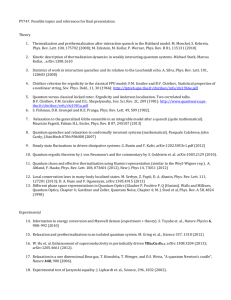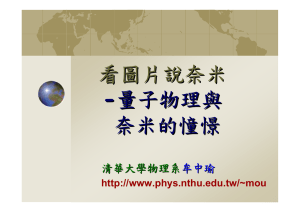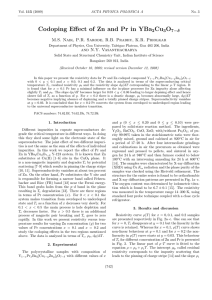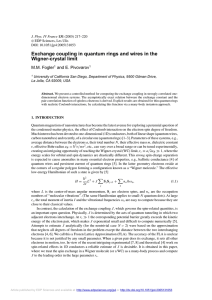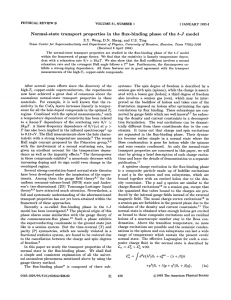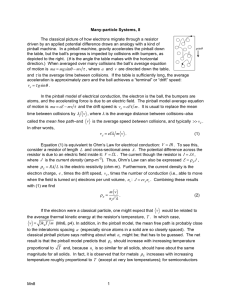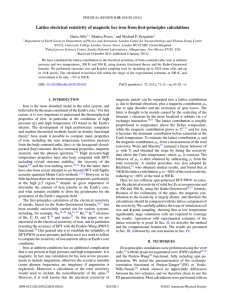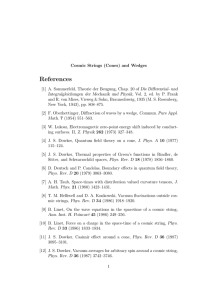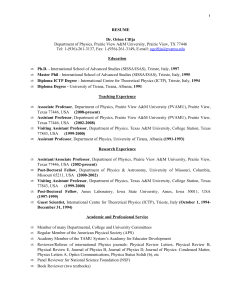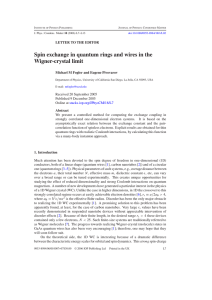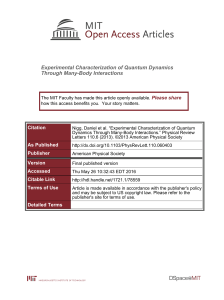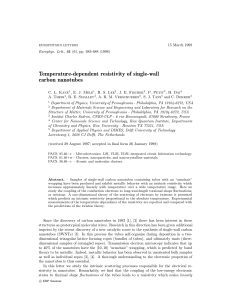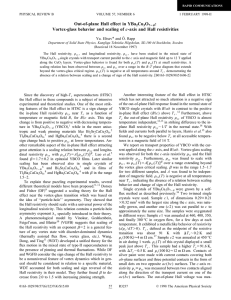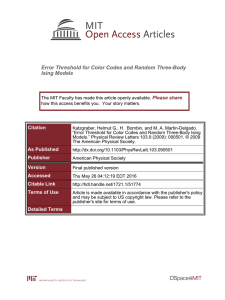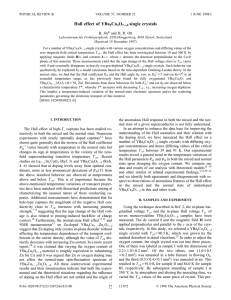Canonical behavior of the specific heat 118,
advertisement
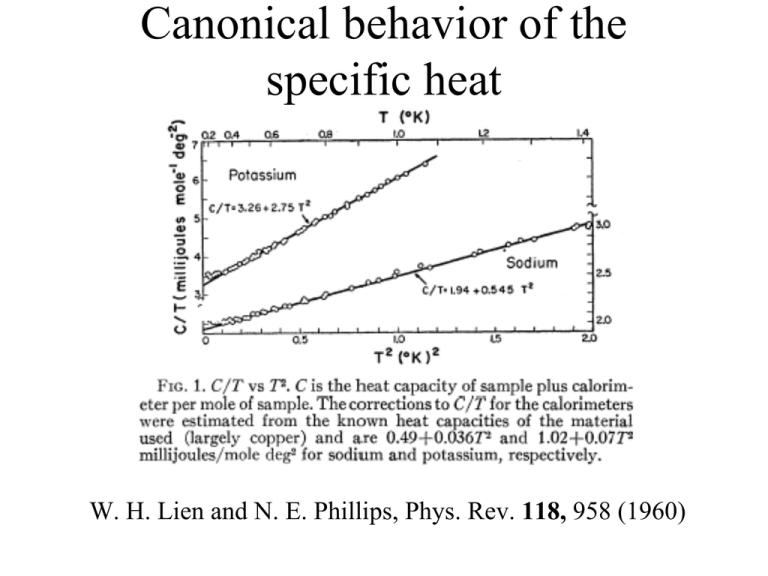
Canonical behavior of the specific heat W. H. Lien and N. E. Phillips, Phys. Rev. 118, 958 (1960) Less canonical behavior of C(T)—notice a pronounced T 3 ln T term. Such a term, however, is still within the Fermi-liquid theory. G. Stewart, Rev. Mod. Phys. 56, 755 (1984) Non-Fermi-liquid behavior of the specific heat Amitsuka et al. Physica B 206&207, 461 (1995) Interaction-induced renormalizaton of the Fermi-gas parameters kF l ; 1 χ*/χ rs ≡ m0 e 2 1/ π n rs Resistive transition Si-MOSFET Pudalov at al. (2001) interaction Qualtitatively similar results on n- and p-GaAs Linear T-dependence of the resistivity: understood cases Interaction of electrons with lattice vibrations (phonons) Linear T-dependence of the resistance: mysterious cases • Some heavy-fermion compounds • High-Tc superconductors in the normal phase Resistivity as a function of T in a heavy-fermion compound YbRh 2 ( Si 0.95Ge0.95 ) 2 J. Custers, PhD thesis 2004 TU Dresden Cannot be phonons (too low T) Slope of ρ = AT a Origin of the linear T dependence: most likely not phonons T term in the resistivity of Al 2 Landau Fermi-liquid theory (1958): 1 τ e− e T2 ∝ T 2 T2 2 ρ = AT law Another example of the K. E. Andres, J. E. Graebner, and H. R. Ott Phys. Rev. Lett. 35, 1779 (1975) Quantum ferromagnetic phase transition in NiPd alloy • Adding non-magnetic Pd to magnetic Ni, one destroys ferromagnetism (FM). • This destruction happens at a well defined concentration of Pd, where the critical temperature of the FM transition vanishes. • Points where a phase transformation occurs at zero temperature due to tuning of some control parameter are called Quantum Phase Transitions. • Experiments are performed at finite temperatures —signatures in C(T), resistivity, etc. A dissenting opinion: P. Allen from Stony Brook [Nature, 412, 494 (2001)] argues that this linear-in-T dependence can be well explained by phonons. Hall Effect Al Graphite, S. Tongay et al. arXiv:0907.1111 your next homework Weak-field limit RH = R1 ρ (ρ1+ 2 2 ρ 2) 2 + R2 ρ (ρ1+ 2 1 ρ 2) 2 Bi @ T=25 mK Bompadre, Biagini, Maslov, and Hebard, Phys. Rev. B Quantum magnetoscillations in HTc superconductors http://en.wikipedia.org/wiki/Quantum_Hall_effect
![[1]. In a second set of experiments we made use of an](http://s3.studylib.net/store/data/006848904_1-d28947f67e826ba748445eb0aaff5818-300x300.png)



